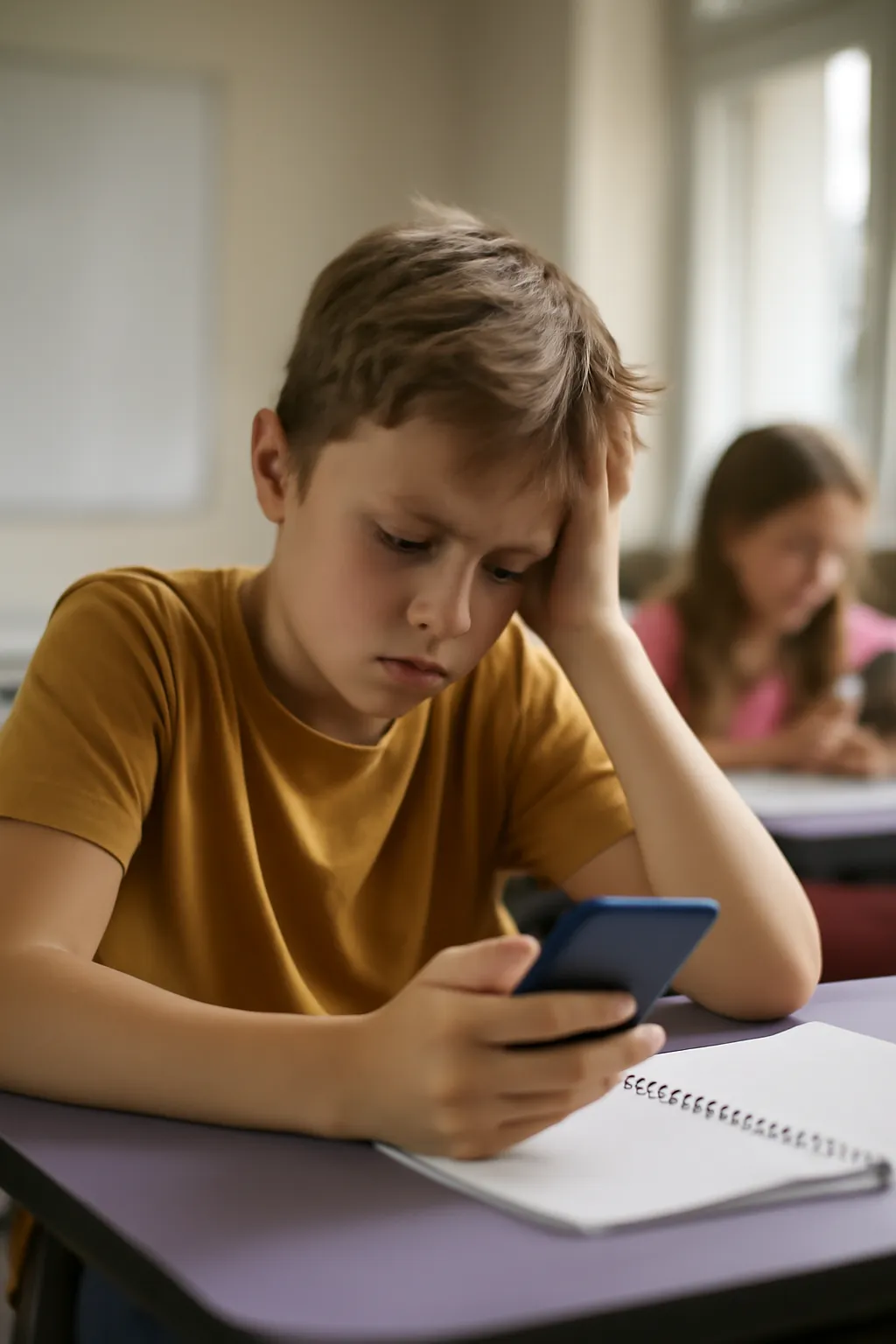Are your children spending too much time on their smartphones? Learn about the rising issue of elementary school cell phone addiction, practical solutions, and real-life examples of how it’s affecting young learners. Is it possible to find a balance?
Cell phone addiction has become a concerning issue across all age groups, and children are no exception. In particular, elementary school students are increasingly becoming addicted to their smartphones. While mobile devices can be beneficial for educational purposes, excessive screen time can lead to serious issues for young minds. In this article, we will explore the growing concern of elementary school cell phone addiction, potential solutions for smartphone addiction in young children, and share real-life examples of how this problem is manifesting in elementary schools.
Elementary Cell Phone Addiction: The Growing Concern
As technology continues to evolve, smartphones have become a ubiquitous part of daily life, even for children. Many elementary school students now have access to these devices, which offer a wide range of entertainment and communication options. However, the constant availability of games, social media, and videos can make it incredibly difficult for children to focus on other important activities, such as schoolwork or family time.
Why is this a problem?
The primary concern with elementary cell phone addiction is the impact it can have on a child’s social, emotional, and cognitive development. Young children are particularly vulnerable to the negative effects of excessive screen time, which can include:
-
Reduced attention span Children who spend too much time on their phones may struggle with maintaining attention in class or during homework time.
-
Impaired social skills Face-to-face interactions are essential for developing social skills. Children glued to their phones often miss opportunities to build meaningful relationships with peers.
-
Sleep disruption Excessive phone use, especially before bedtime, can lead to poor sleep habits, affecting a child’s ability to focus and perform well in school.
A real-life case demonstrates the severity of this issue. A parent in New York reported that their 10-year-old child had been so immersed in gaming apps on their phone that they began to skip meals and sleep hours, which directly impacted their academic performance and mood. This is just one example of how technology addiction is creeping into the lives of young students.
Elementary School Student Smartphone Addiction Solution
While it’s clear that smartphone addiction among elementary students is a growing issue, the good news is that there are steps that both parents and schools can take to address this problem. It’s important to approach the situation from a balanced perspective, aiming to reduce screen time while still allowing children to benefit from the educational tools that smartphones can offer.
1. Set Screen Time Limits
One of the most effective solutions is to set clear limits on how much time children can spend on their phones. For example, parents can use apps to monitor and restrict screen time or set timers for when it’s appropriate to use devices. Schools can also implement classroom policies where smartphones are allowed only for educational purposes.
2. Encourage Outdoor Activities
Encouraging children to engage in physical activities is another key solution to counteract smartphone addiction. Parents can enroll their children in sports, outdoor games, or nature walks to promote healthy habits that don’t involve screens.
3. Introduce “Phone-Free Zones” at Home
Creating designated phone-free zones in the home, such as the dining room or bedrooms, can help minimize phone use during key times, like family meals or before bed. This will help children develop healthier routines and strengthen their social interactions.
4. Educational Alternatives
While phones are often seen as sources of entertainment, they can also be powerful educational tools. Parents and educators can guide children toward learning apps and educational videos that are enriching, offering an opportunity for children to engage with technology in a positive way.
These solutions are already making a positive impact in certain areas. For instance, a school in California introduced a policy of limiting smartphone use during school hours, and within a few months, teachers observed significant improvements in students’ ability to focus and interact with their peers.
👉 Learn more about managing smartphone addiction in children! 👈
Case of Addiction in Elementary School Smartphones
The case of addiction among elementary school students is not a distant possibility—it’s happening now. Schools and families are struggling with how to help children break free from their dependency on smartphones. One such case involves a child from Illinois who was found spending up to 6 hours a day on his phone, which led to severe academic decline and social withdrawal.
This case highlights several alarming symptoms of smartphone addiction in children:
-
Social Isolation The child preferred playing online games alone rather than interacting with friends or participating in group activities. This led to a lack of social connection, leaving the child feeling lonely and disconnected.
-
Declining Academic Performance As the child became more engrossed in digital entertainment, his academic performance suffered. He struggled to complete assignments and had difficulty concentrating during class discussions.
-
Behavioral Changes The child exhibited signs of irritability when not allowed to use his phone. This behavior mirrored the withdrawal symptoms seen in individuals with substance addictions.
Thankfully, after his parents intervened and sought professional help, the child received therapy and began engaging in healthier activities. His screen time was reduced, and he gradually reconnected with friends and improved his academic performance.
It’s important to note that while smartphone addiction is a serious issue, recovery is possible with the right intervention. Early detection and consistent support from family, friends, and educators are essential for helping children regain control over their smartphone use.
👉 Discover more strategies for helping kids reduce smartphone use! 👈
Conclusion
Smartphone addiction in elementary school students is a growing problem that needs urgent attention. With increasing screen time among young children, it’s crucial for parents, educators, and society to work together to find solutions. By setting clear boundaries, encouraging healthier activities, and providing educational alternatives, we can help children develop a balanced relationship with technology.
As parents and educators, we must remember the importance of guiding children towards healthy screen habits. Early intervention can make a significant difference, ensuring that children develop the skills they need to thrive in both the digital and real world.
“The most important thing is to create a healthy balance and set clear boundaries. This way, kids can still enjoy the benefits of technology without it taking over their lives.”
In conclusion, fostering healthy smartphone use is essential for the future of our children. Let’s take action today to protect their well-being tomorrow.






